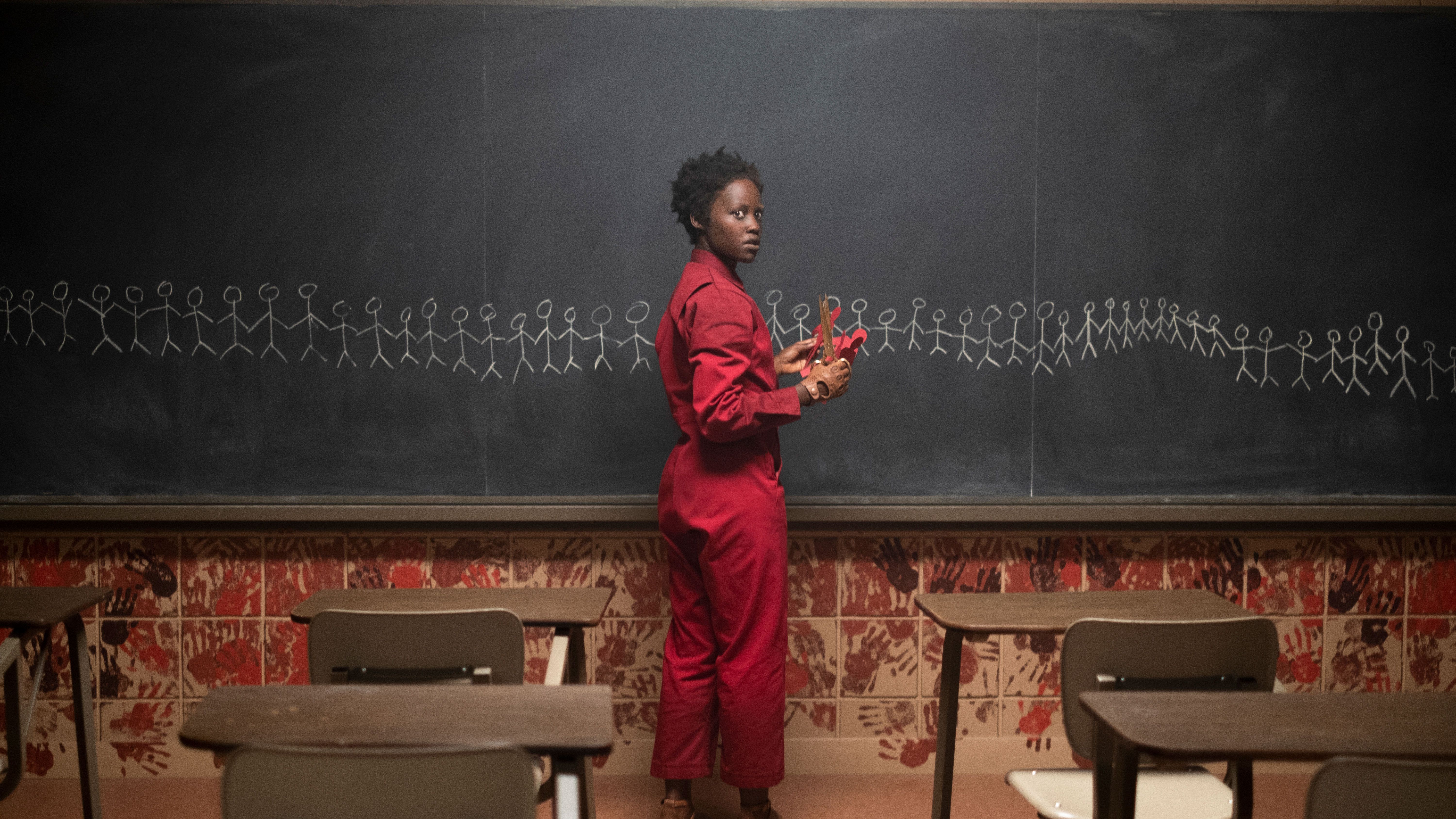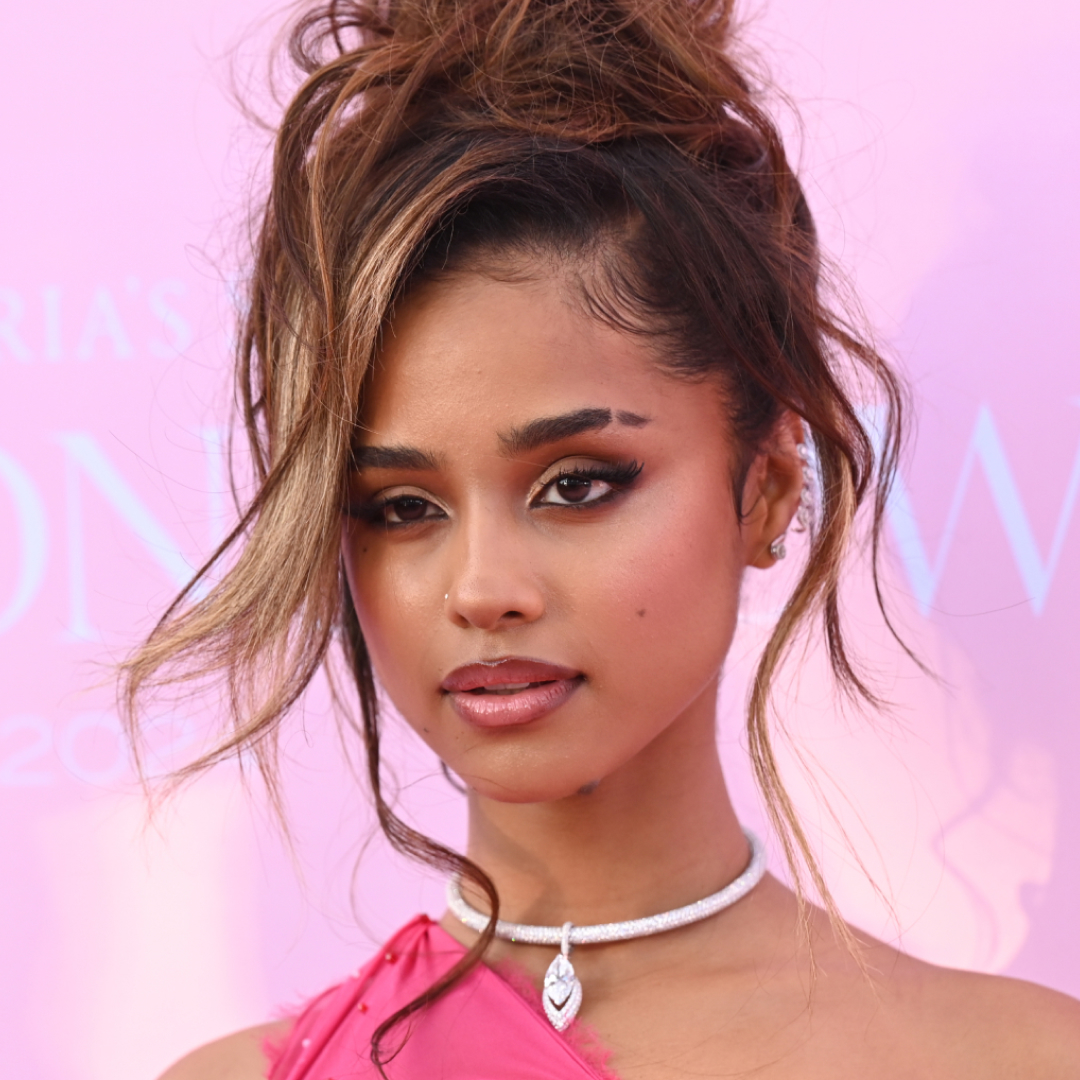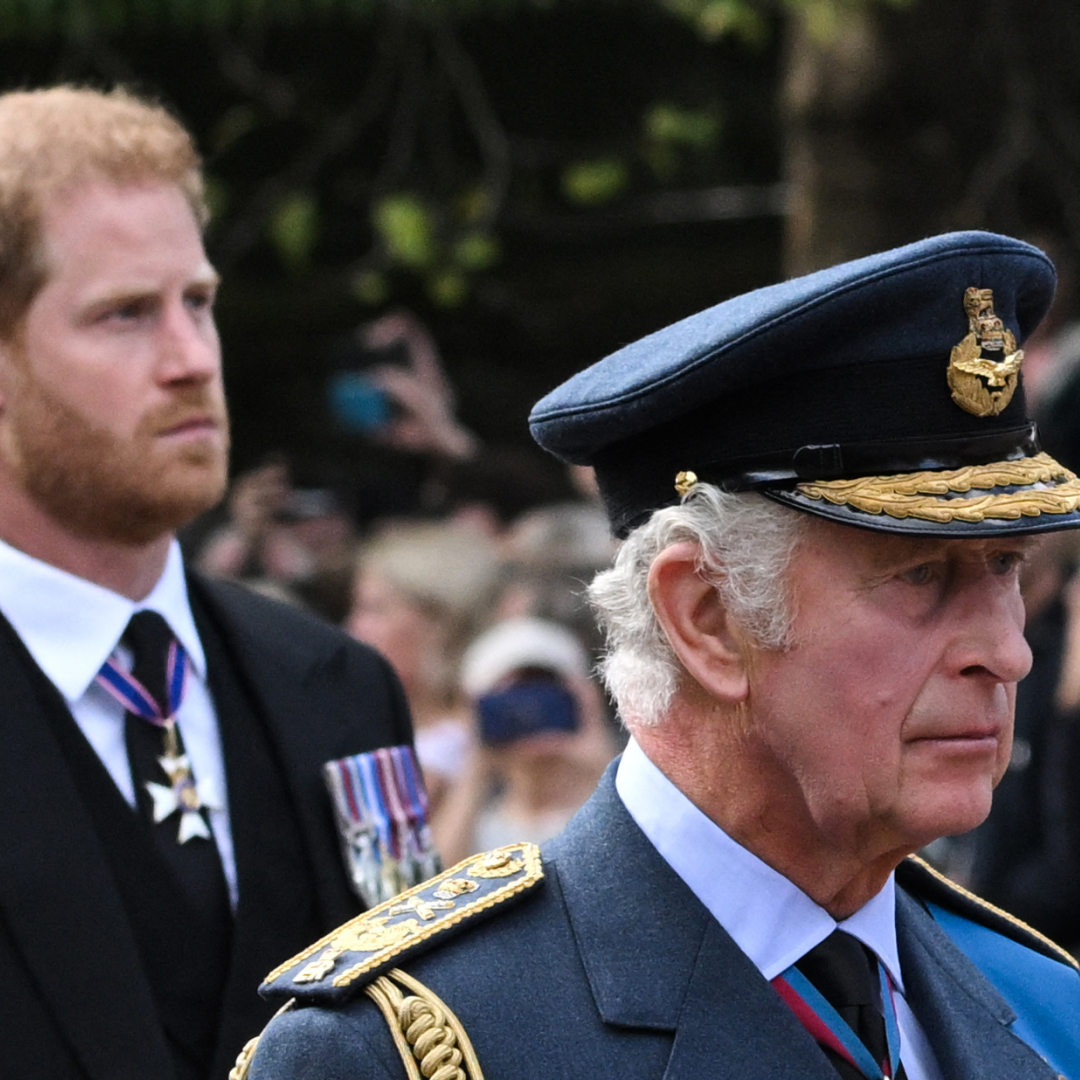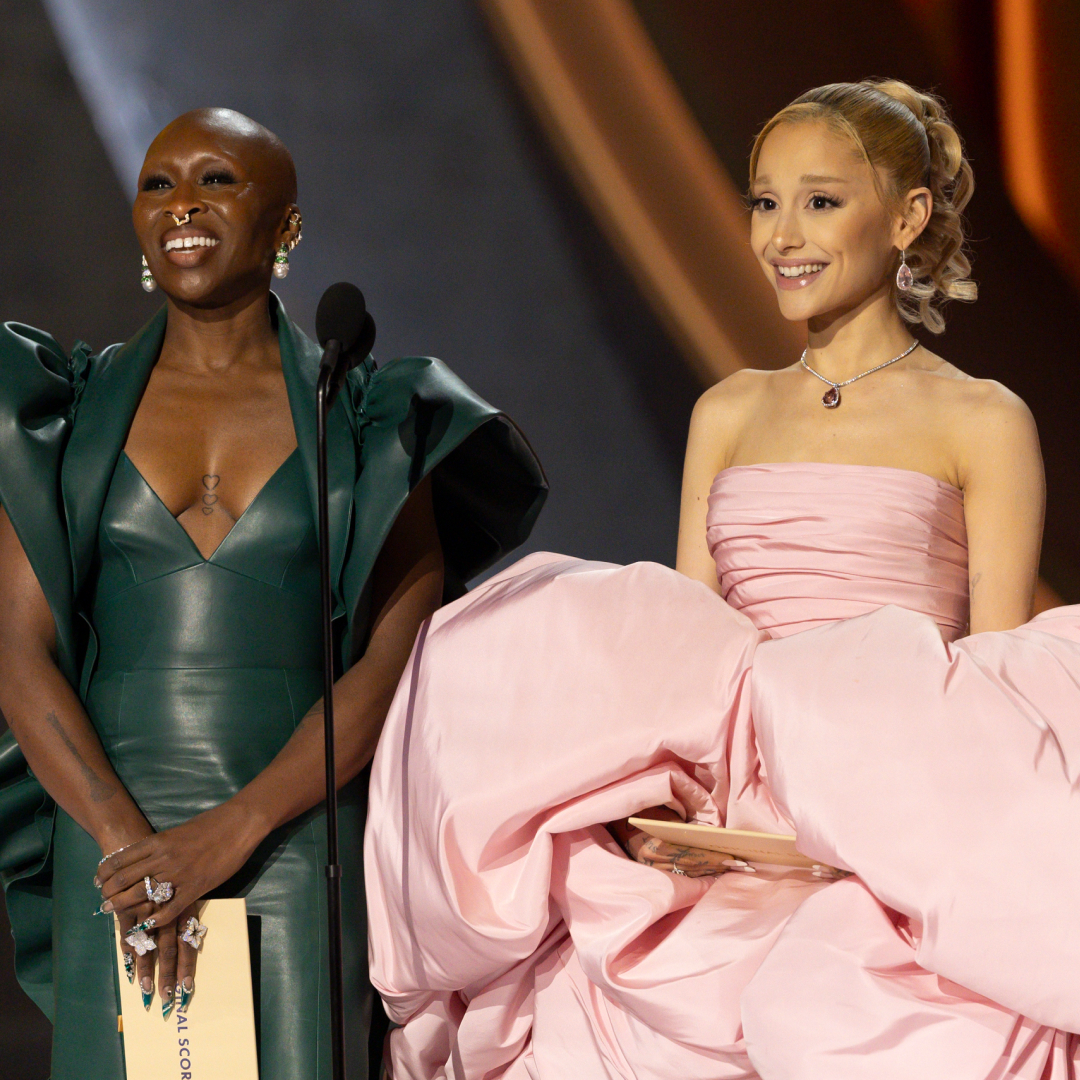I Saw 'Us' and I Will Never Know Peace Again
This is not how I wanted Winston Duke to show up in my dreams.

Hello. I’m writing to you now, a mere shell of the person I once was, because I have not slept since seeing Jordan Peele’s Us.
Some context: I am deeply in love with Winston Duke and consider Lupita Nyong’o to be my third sister. When I first heard that the Yale alumni would be starring in a film together, I was beside myself with excitement. As a passionate #Linston (WinPita just doesn’t roll off the tongue as smoothly) shipper, I imagined the duo in all sorts of plots—well, mostly romantic storylines—that involved a lot of hand-holding and panoramic shots of them staring into each other’s eyes. And kissing. Lots of kissing.
LOL.
Some more context: I don’t watch scary movies. I have an overactive imagination that will run wild if I allow it to, and after a long bout of insomnia a few years back, peaceful sleep is so precious to me. The scariest film I’ve ever watched was one from the Left Behind series, where I watched a man transform into the Antichrist on an airplane. Needless to say, I am the absolute last person who should have purchased tickets to see this film.

Despite these factors, I still watched Us, because:
- I support black film no matter the genre;
- I love Winston Duke and Lupita Nyong’o with the fire of a thousand suns; and
- I am very, very silly.
The movie opens with a flashback to 1986, the year that the nightmare began. A young Adelaide (Nyong'o) experiences a mysterious trauma at a funhouse on the Santa Cruz boardwalk that, we assume, will affect her for the rest of her life.
Flash forward to the present, where we encounter the fairly normal Wilson family for the first time. Now married, Adelaide and her husband Gabe (Duke) have two children, with whom they're taking a family trip to the beach. A bespectacled and sleeveless Gabe, a true zaddy, sings along to hip-hop duo Luniz’s classic “I Got 5 on It," and Adelaide turns around to teach her son how to stay on beat. Dad jokes are shared, laughs are had—but the fun times pretty much end there.
Stay In The Know
Get exclusive access to fashion and beauty trends, hot-off-the-press celebrity news, and more.
For the next hour and a half, I watched (through my fingers, mostly) the Wilson family battle their sinister selves, sinking lower and lower into my seat in abject fear. Their shadows, the "Tethered," are out for blood and can't be reasoned with, despite Gabe's best attempts. Without giving too much away, a lot of people die. And the last ten minutes offer up a twist that had the entire theater erupting in a fury of obscenities.

My takeaway is that Jordan Peele is warped. Amazingly talented, but clearly super warped. I walked out of the Magic Johnson theater in Harlem wondering what exactly is going on in his mind to think of stories like Get Out and Us. The funny man from Comedy Central’s Key & Peele seems to have been replaced by an evil genius—his Tether??—who isn’t afraid to take it there. He takes on horror headfirst, injecting the genre with culture-relevant humor and fine details so small that you'll miss them if you look away for even a second.
Like Get Out, the film is a textured and terrifying social commentary of middle America. Through subtle symbolism like the Thriller t-shirt that young Adelaide dons at the carnival, Peele forces us to realize that, even when we were expecting a monstrous Other, sometimes we ourselves are the things that go bump in the night.
Us is the kind of movie that, at some points, has you leaning all the way forward in your seat in nervous anticipation, and at others leaning all the way back as far as possible to prevent yourself from being hacked to death by your doppelgänger through the screen. The ensemble of actors—though Nyong'o is clearly the lead here—are fascinating to watch and impossible to root against; we are desperate for them to survive because there is no other option.

Highlights of this movie include:
- Winston Duke in tortoise-shell glasses and a Howard sweatshirt. What a boyfriend.
- Lupita should and probably will get an Oscar nomination for this film. The contrast between Adelaide and Red was so stark that I could honestly believe that they were two completely different people. And that twisted smile of hers? *shudders*
- Jordan Peele's take on the horror genre is impressive, specifically his turning of the "black people in scary movies always die first" cliché on its head. Writing a horror film centering black people (without also making their race be the cause of the horror) is a fresh angle that Hollywood really needs right now.
Also, personal lows:
- "I Got 5 On It" has been ruined for me forever.
- #Linston only kissed once??
- I had to unfollow Lupita on Instagram because I can't stop seeing her as Red. I'm so sorry, sis, but this is for self-care.
From the moment the movie opened to the moment that the very last credit rolled, I felt chills down my spine. Even as I lay in bed hours later, I imagined that every creak and croak was the sound of a Tethered creeping around my apartment, golden scissors in hand.
I need some holy water.
For more stories like this, including celebrity news, beauty and fashion advice, savvy political commentary, and fascinating features, sign up for the Marie Claire newsletter.
RELATED STORIES



Lagos-born and Houston-raised, Ineye Komonibo is a writer and editor with a love for all things culture. With an academic background in public relations and media theory, Ineye’s focus has always been on using her writing ability to foster discourse about the deep cyclical relationship between society and the media we engage with, ever-curious about who we are and what we do because of what we consume. Most recently, she put her cultural savvy to work as a culture critic for R29 Unbothered, covering everything from politics to social media thirst to the reverberations of colorism across the African diaspora.
-
 Tyla's Coachella Outfit Pairs Dolce & Gabbana With Pandora
Tyla's Coachella Outfit Pairs Dolce & Gabbana With PandoraThe singer wore a gold version of the crystal bra made famous by Aaliyah.
By Amy Mackelden Published
-
 How Kate Middleton Is Influencing George's Fashion Choices
How Kate Middleton Is Influencing George's Fashion ChoicesThe future king's smart blazer is straight out of Princess Kate's style playbook.
By Amy Mackelden Published
-
 King Charles "Couldn't" Meet Prince Harry During U.K. Visit
King Charles "Couldn't" Meet Prince Harry During U.K. Visit"It could actually bring down a court case."
By Amy Mackelden Published
-
 In 'Opus,' Cult Leaders and Pop Stars Are One in the Same
In 'Opus,' Cult Leaders and Pop Stars Are One in the SameThe A24 film's costume and production designers open up about crafting fictional pop icon Moretti’s style and mysterious estate.
By Sadie Bell Published
-
 'On Becoming a Guinea Fowl' Is a Revolutionary Call to Speak Up Against Female Abuse
'On Becoming a Guinea Fowl' Is a Revolutionary Call to Speak Up Against Female AbuseAfter showing how a culture of silence around abuse can devastate entire generations, the arresting A24 film holds a mirror up to the audience and asks, \201cWhat happens if we scream?\201d
By Quinci LeGardye Published
-
 'Anora' Star Mikey Madison Takes Home the Best Actress Award at the 2025 Oscars in a Surprise Win
'Anora' Star Mikey Madison Takes Home the Best Actress Award at the 2025 Oscars in a Surprise Win"I will continue to support and be an ally."
By Quinci LeGardye Published
-
 Zoe Saldaña Becomes the First American of Dominican Origin to Win an Oscar
Zoe Saldaña Becomes the First American of Dominican Origin to Win an Oscar"I am the first American of Dominican origin to accept an Academy Award and I know I will not be the last."
By Quinci LeGardye Published
-
 LISA, Doja Cat, and Raye Perform a Glamorous 'James Bond' Tribute at the 2025 Oscars
LISA, Doja Cat, and Raye Perform a Glamorous 'James Bond' Tribute at the 2025 OscarsThe Academy Awards are for the pop girls, actually.
By Quinci LeGardye Published
-
 Ariana Grande and Cynthia Erivo Open the 2025 Oscars With a Showstopping 'Wicked' Performance
Ariana Grande and Cynthia Erivo Open the 2025 Oscars With a Showstopping 'Wicked' PerformanceThe awards show began with a medley of songs inspired by the Best Picture-nominated film and adaptations of 'The Wizard of Oz.'
By Quinci LeGardye Published
-
 Everything to Know About the 2025 Oscars, From How to Watch to the Nominations
Everything to Know About the 2025 Oscars, From How to Watch to the NominationsIt's bound to be an unpredictable awards show.
By Quinci LeGardye Last updated
-
 Cazzie David Spent Five Years Fighting to Make an "Anti-Rom-Com" About Emotional Abuse
Cazzie David Spent Five Years Fighting to Make an "Anti-Rom-Com" About Emotional AbuseThe writer/actress opens up about how she found catharsis after a breakup by making 'I Love You Forever.'
By Sadie Bell Published